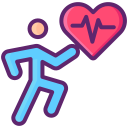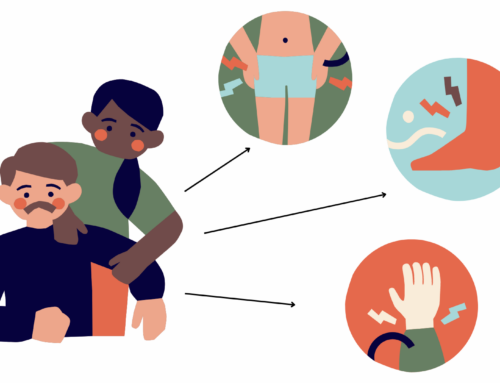How to breathe correctly?
How is the 'good breathing'?
Most people do not know how to breathe well, they do it in a superficial way and only take advantage of a third of the capacity of the lungs, so it is important to learn to breathe.
Exercises to learn how to breathe with the diaphragm
Lie on your back with a pillow under your knees and a weight on your stomach.
Breathe in slowly through your nose and be aware of the movement of the air. Fill the highest part of your abdomen with air, while the chest area barely moves. Your stomach should rise well above your chest.
Exhale the air slowly by pursing your lips.
Benefits of correct breathing
Tips for getting good breathing
Incorporate healthy lifestyle habits

Do not smoke, practice physical exercise on a regular basis and eat a rich and varied diet every day of the year. Your health and lung capacity will thank you.
Practice aerobic physical exercise such as running or swimming, for example. -This will help the lung capacity and resistance to effort. The rib cage (which surrounds the lungs) is elastic and if you work it, it expands more. Thus it is able to "catch" more air when breathing.
Include disciplines and stretching

Practice disciplines such as yoga, Pilates or tai chi. They improve breathing technique. Specifically, they help breathing move from being a mechanical and unconscious function to a conscious one. Thus, they teach him to "re-educate" the respiratory system.
Include a stretching routine focused on your upper body, especially when you get up and go to sleep. Remember to take deep breaths through your nose while stretching.
Now you know that breathing well and being aware of breathing not only helps to get oxygen for the body, it also contributes to physical health, taking care of the body's organs. It also helps improve emotional well-being, improve vitality, and reduce stress and anxiety. Improve your quality of life by learning to breathe.
How is the 'good breathing'?
Most people do not know how to breathe well, they do it in a superficial way and only take advantage of a third of the capacity of the lungs, so it is important to learn to breathe.
Exercises to learn how to breathe with the diaphragm
Lie on your back with a pillow under your knees and a weight on your stomach.
Breathe in slowly through your nose and be aware of the movement of the air. Fill the highest part of your abdomen with air, while the chest area barely moves. Your stomach should rise well above your chest.
Exhale the air slowly by pursing your lips.
Benefits of correct breathing
Tips for getting good breathing
Incorporate healthy lifestyle habits

Do not smoke, practice physical exercise on a regular basis and eat a rich and varied diet every day of the year. Your health and lung capacity will thank you.
Practice aerobic physical exercise such as running or swimming, for example. -This will help the lung capacity and resistance to effort. The rib cage (which surrounds the lungs) is elastic and if you work it, it expands more. Thus it is able to "catch" more air when breathing.
Include disciplines and stretching

Practice disciplines such as yoga, Pilates or tai chi. They improve breathing technique. Specifically, they help breathing move from being a mechanical and unconscious function to a conscious one. Thus, they teach him to "re-educate" the respiratory system.
Include a stretching routine focused on your upper body, especially when you get up and go to sleep. Remember to take deep breaths through your nose while stretching.
Now you know that breathing well and being aware of breathing not only helps to get oxygen for the body, it also contributes to physical health, taking care of the body's organs. It also helps improve emotional well-being, improve vitality, and reduce stress and anxiety. Improve your quality of life by learning to breathe.





